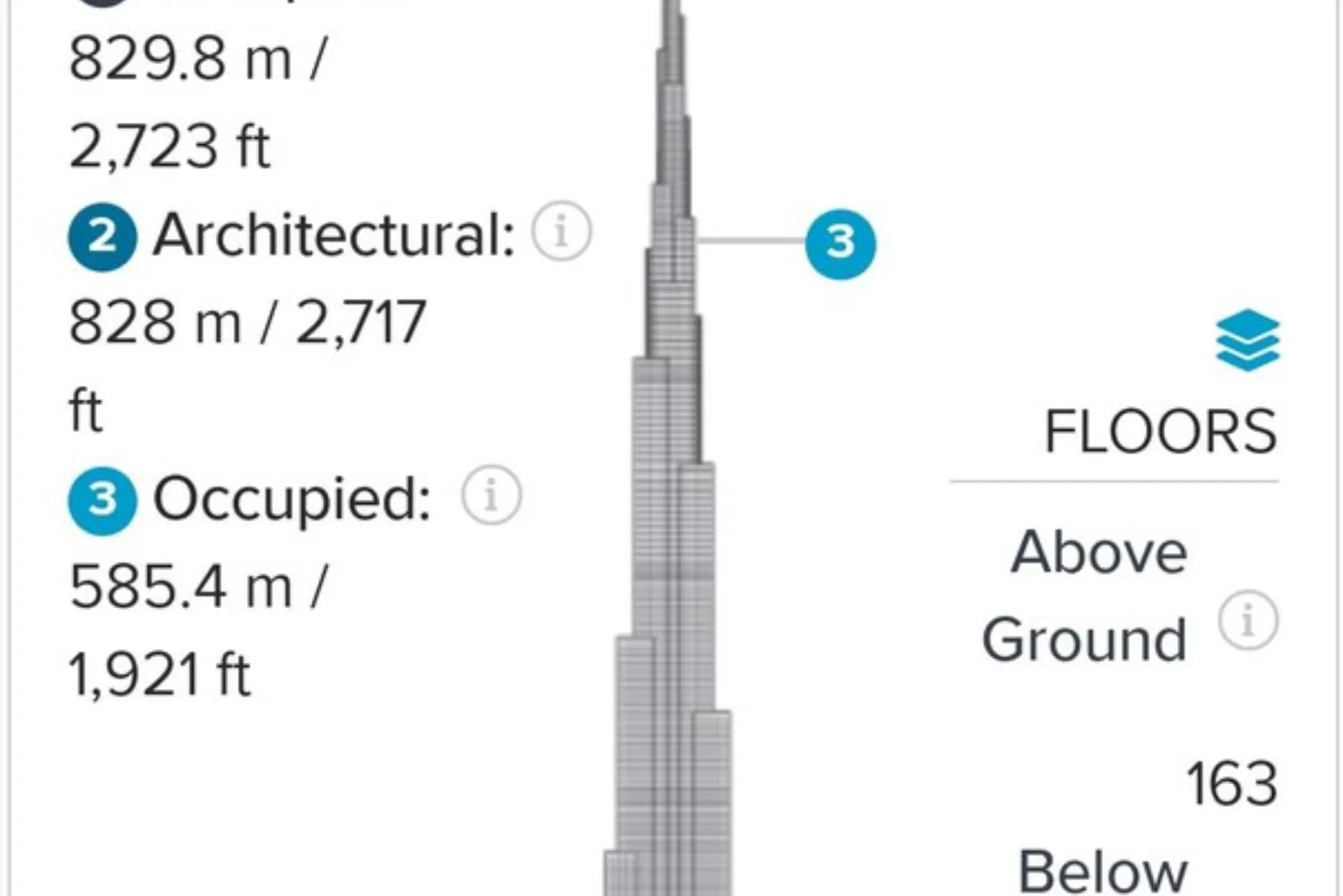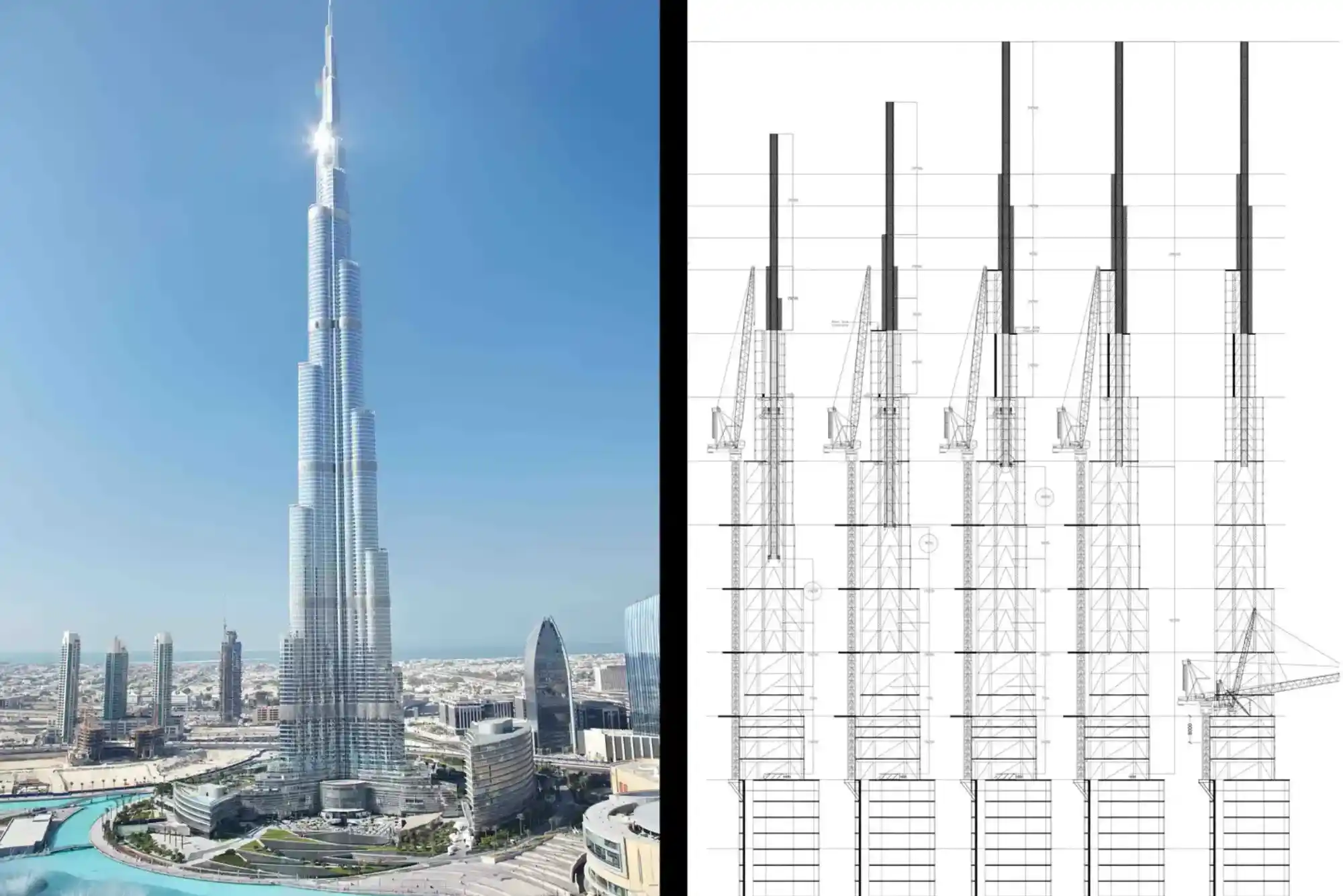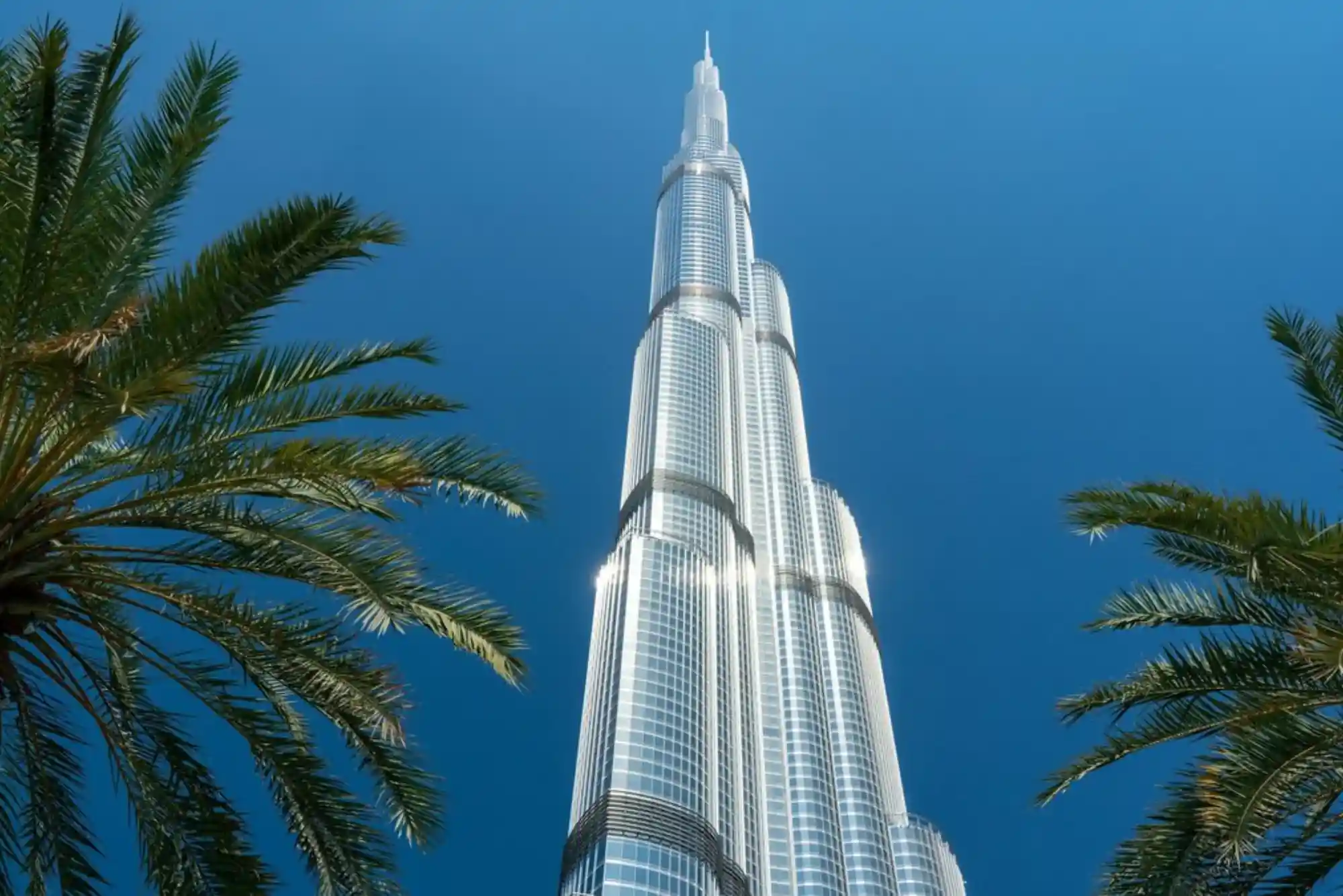The Burj Khalifa, a marvel of modern engineering and architecture, stands as the tallest building in the world. Located in the heart of Dubai, this iconic structure has become a global symbol of innovation, ambition, and excellence. Towering at a height of 828 meters, the Burj Khalifa is not just an architectural wonder but also a hub of luxury living, business opportunities, and tourism. One of the most fascinating aspects of the Burj Khalifa is its impressive number of floors, which contribute to its global recognition.
Total Number of Floors in the Burj Khalifa
The Burj Khalifa boasts an astounding 163 floors above ground, making it one of the most remarkable skyscrapers ever built. These floors include residential apartments, corporate offices, luxurious hotels, observation decks, and exclusive amenities. Additionally, the building has two underground levels, primarily utilized for parking and building operations. With such a massive structure, the Burj Khalifa is a testament to Dubai’s vision of pushing boundaries in construction and design.

Distribution of Floors in the Burj Khalifa
The floors of the Burj Khalifa are designed to serve a variety of purposes. The lower levels are dedicated to the luxurious Armani Hotel Dubai, a masterpiece collaboration between Giorgio Armani and Emaar Properties. This hotel occupies the first eight floors and some additional levels, offering an unparalleled hospitality experience. The mid-levels are home to premium residential apartments that offer breathtaking views of Dubai’s skyline, the Arabian Gulf, and surrounding landmarks, including Dubai Parks and the Dubai Fountain.
The higher levels of the Burj Khalifa house corporate suites and offices, making it a hub for elite business activities. The observation decks, located on the 124th, 125th, and 148th floors, are among the most popular attractions, offering panoramic views of Dubai. The 148th-floor deck, known as At The Top SKY, holds the record for being the world’s highest observation platform. The uppermost levels are dedicated to mechanical operations and the spire, which contributes significantly to the building’s towering height.
The Role of the Burj Khalifa in Dubai’s Skyline
The Burj Khalifa has played a transformative role in redefining Dubai’s skyline and its global image. As part of the Downtown Dubai development, the tower is surrounded by key attractions like the Dubai Mall, the Dubai Fountain, and Dubai Parks, making it a central hub for tourism and entertainment. Its proximity to Dubai Parks highlights the city’s commitment to creating a vibrant and diverse destination for residents and visitors alike.
Design and Construction of the Burj Khalifa
The Burj Khalifa’s design is inspired by Islamic architecture, reflecting the cultural heritage of the region while embracing modern technology. The building was designed by the architectural firm Skidmore, Owings & Merrill, with Adrian Smith as the lead architect. Its unique design incorporates setbacks at various levels, creating a spiral pattern that reduces wind resistance and enhances stability. This ingenious design allowed the tower to reach unprecedented heights.

The construction of the Burj Khalifa began in 2004 and was completed in 2010. Over 12,000 workers and engineers from around the world contributed to its construction. Advanced materials, including reinforced concrete and high-performance glass, were used to ensure the structure’s durability and sustainability. The Burj Khalifa is also designed to withstand extreme temperatures and seismic activity, reflecting Dubai’s forward-thinking approach to construction.
Experiences at the Burj Khalifa
Visiting the Burj Khalifa is an unforgettable experience that attracts millions of tourists every year. The observation decks offer visitors an unparalleled view of Dubai’s sprawling urban landscape, stretching from the desert to the sea. The journey to the top begins with high-speed elevators that transport visitors to the observation decks in seconds. Once there, the breathtaking views and interactive displays provide a deeper understanding of the building’s significance and the city’s development.
For those seeking a unique dining experience, the Burj Khalifa is home to Atmosphere, a fine-dining restaurant located on the 122nd floor. This restaurant offers exquisite cuisine paired with stunning views, making it a popular choice for special occasions. Visitors can also explore the surrounding attractions, such as Dubai Parks, the Dubai Mall, and the Dubai Fountain, to enhance their experience.
Burj Khalifa: A Symbol of Dubai’s Ambition
The Burj Khalifa is more than just a building; it is a symbol of Dubai’s ambition to be a global leader in innovation, luxury, and tourism. Its record-breaking height and intricate design reflect the city’s determination to achieve greatness. By combining cutting-edge technology with cultural elements, the Burj Khalifa stands as a beacon of inspiration for architects and engineers worldwide.
The tower also plays a key role in Dubai’s economy, attracting investments and generating significant revenue through tourism and real estate. The Burj Khalifa has become a benchmark for future skyscrapers, setting new standards for sustainability, functionality, and aesthetics. It serves as a reminder of what can be achieved through vision, determination, and collaboration.
Planning a Visit to the Burj Khalifa
When planning a visit to the Burj Khalifa, it is essential to book tickets in advance to secure a preferred time slot. Tickets for the observation decks vary in price, with standard entry starting at AED 150 and VIP experiences costing significantly more. Visitors are advised to choose early morning or evening time slots for the best views and to avoid peak crowds.
The Burj Khalifa is easily accessible, with public transportation options such as the Dubai Metro and buses available. Visitors can also explore nearby attractions like the Dubai Fountain, Souk Al Bahar, and Dubai Parks, making it a well-rounded destination. A visit to the Burj Khalifa offers a glimpse into Dubai’s rich history, modern achievements, and ambitious future.
With its 163 floors above ground and two underground levels, the Burj Khalifa is a marvel of engineering and a symbol of human achievement. As the tallest building in the world, it has redefined the possibilities of architectural design and urban development. Whether you are drawn to its luxurious amenities, breathtaking views, or cultural significance, the Burj Khalifa offers a unique experience that resonates with visitors from all walks of life. Surrounded by attractions such as Dubai Parks, it remains a cornerstone of Dubai’s status as a global hub for tourism, innovation, and luxury.




